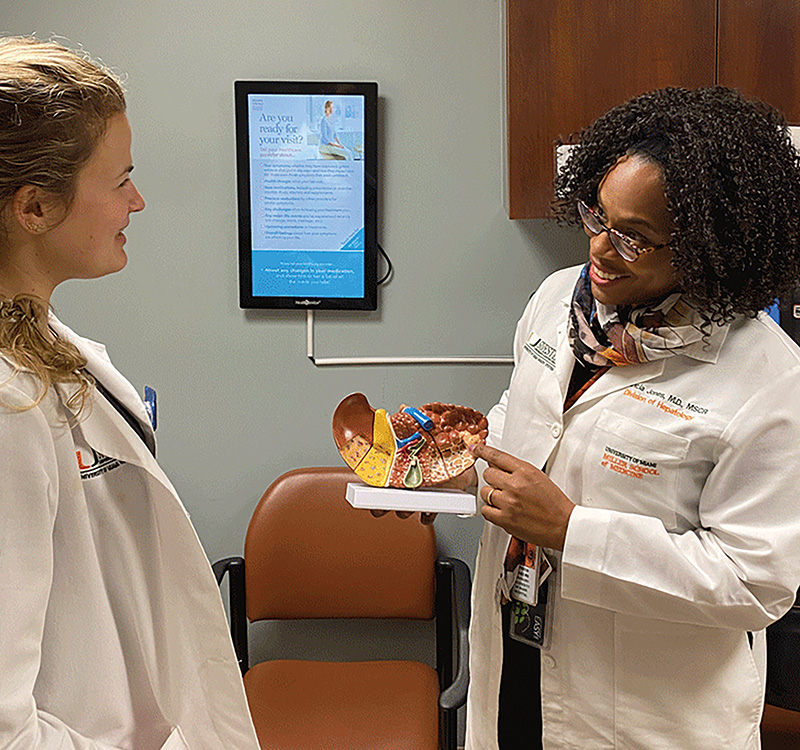To better understand the problem, a group of researchers at Sylvester Comprehensive Cancer Center, part of the University of Miami Miller School of Medicine, and the Department of Gastroenterology, led by assistant professor Patricia Jones, M.D., took a hard look at socioeconomic and other factors that may contribute to liver cancer outcomes. The results produced a mixed picture.
“Typically, when you talk about disparities, the easiest way to explain them is that minorities don't have access to health care – it’s related to socioeconomic differences,” said Dr. Jones. “But when you look at two minority groups in Florida, Hispanics and blacks, Hispanics live in neighborhoods that are the same, if not a little bit worse, based on the census data. Yet, that group has much better outcomes.”
Published in the Journal of Hepatocellular Carcinoma, the study – “Socioeconomic and Survival Differences Among Minorities with Hepatocellular Carcinoma in Florida” – linked several databases to illuminate liver cancer disparities in Florida. These included the Florida Cancer Data System (2004-2013), the U.S. Census American Community Survey (2010-2014) and the Florida Behavioral Risk Factor Surveillance System (2013).
The research looked at nearly 11,000 patients and found that African Americans were younger, and had more widespread disease, when diagnosed. The percentages within the study sample who received transplants also showed wide variation by race: 9.3% of Hispanics, 7.5% of whites, 5.8% of Asians and 4.2% of African Americans.

The researchers also looked at patients’ proximity to multidisciplinary cancer centers, particularly ones that offer transplant services. This geography, perhaps even more than race and socioeconomics, was an important contributor to these variations.
“One of the findings is that people who live closer to a place where they can get a transplant, or where they can get multidisciplinary cancer care, are going to have better outcomes,” said Dr. Jones. “They have more access to surgeries and other treatments.”
Liver cancer is a difficult problem to unwind because there are so many potential causes. While alcohol is
often considered a primary culprit, it actually plays a relatively small part. Hepatitis C, particularly among baby boomers, has been a big cause, but new, highly effective treatments have reduced its contribution. The twin epidemics of diabetes and obesity are playing a larger role and may foreshadow future liver cancer increases.
While this study highlights how specific populations may be more vulnerable to liver cancer, it relies on retrospective registry data, which may offer an incomplete picture. For example, the data did not provide insights into whether some high-risk people were receiving regular liver cancer screenings or where they were being screened. Researchers inferred that African Americans were not being screened as aggressively because they tended to present with more widespread disease.
To better understand this and other issues, Dr. Jones and colleagues have begun prospective studies to follow patients through the process. The research team believes this will provide a more granular view to better inform policy.
“The goal is to figure out who we need to screen more intensely,” said Dr. Jones. “We want to diagnose people earlier, so we can do more for them and improve their survival.”